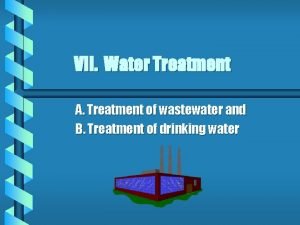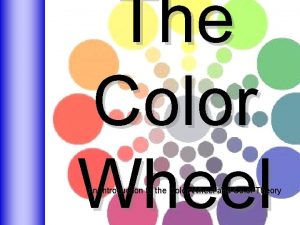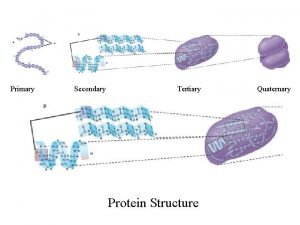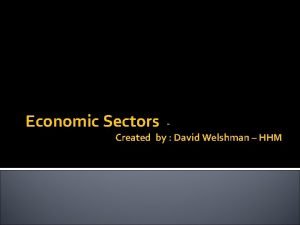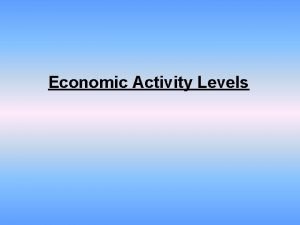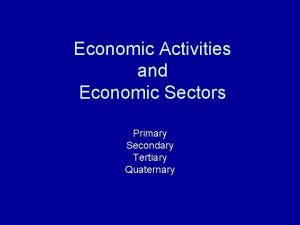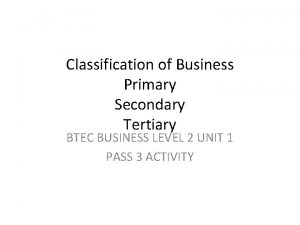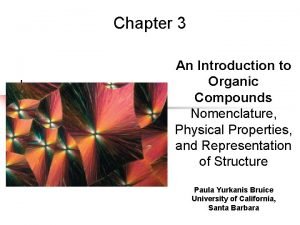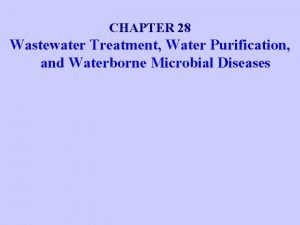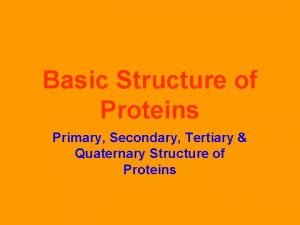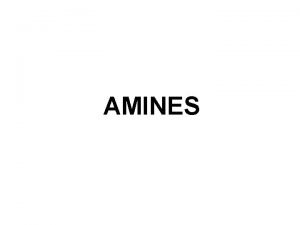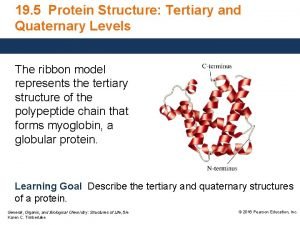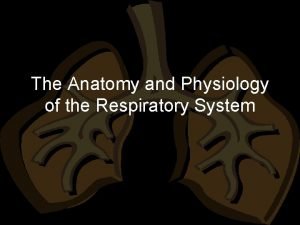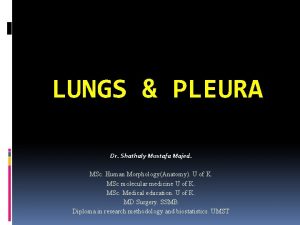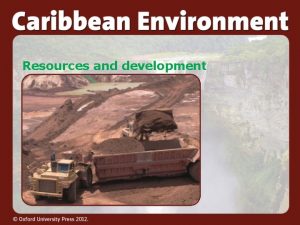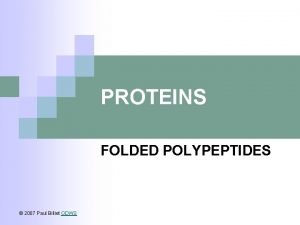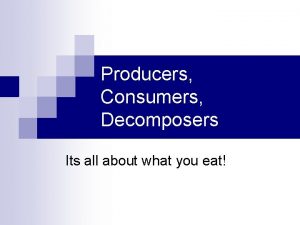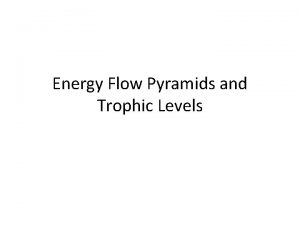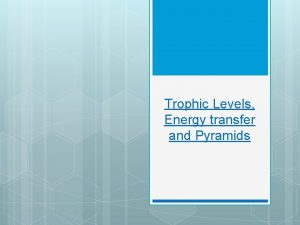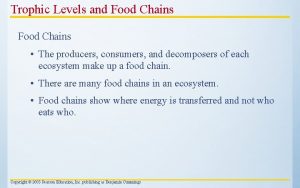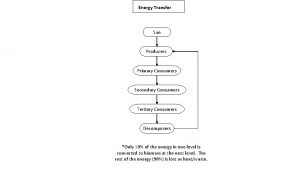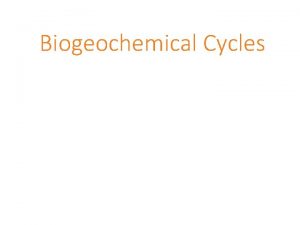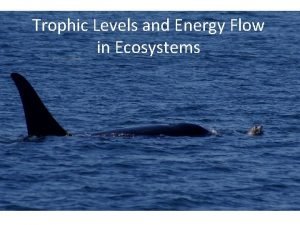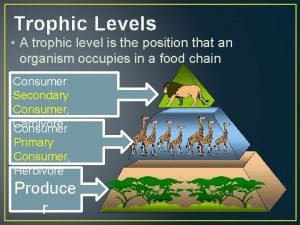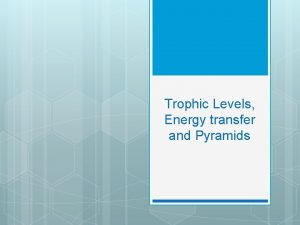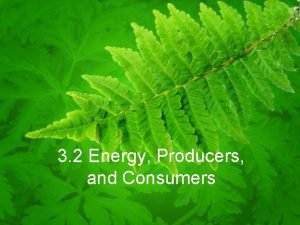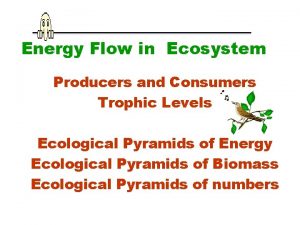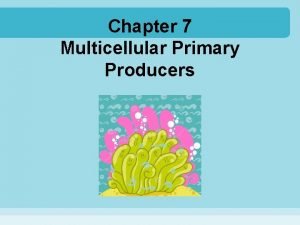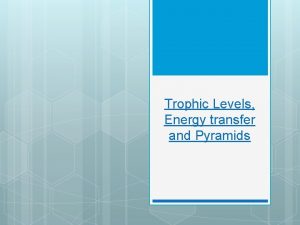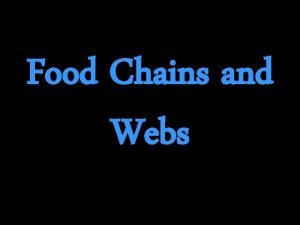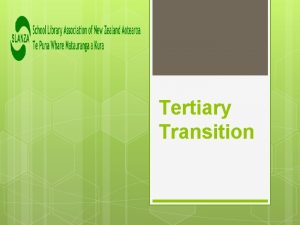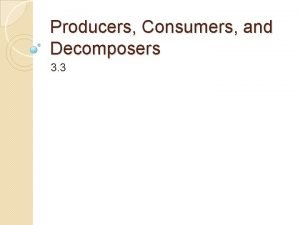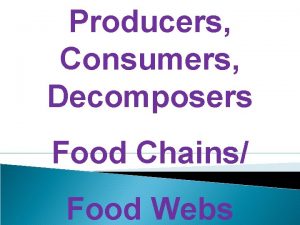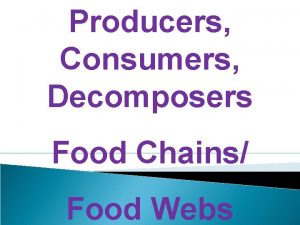Trophic Levels Producers Primary Consumers Secondary Consumers Tertiary





























- Slides: 29

Trophic Levels

Producers

Primary Consumers

Secondary Consumers

Tertiary Consumers

Decomposers

Kinds of consumers • ______ consumer who eats producers. • _______ consumer who eats only other consumers • ________consumer who eats producers and consumers • ________ consumer who breaks down dead organisms

Ecosystems • A community of organisms (i. e. plants and animals) living together with their environment (non-living aspects), functioning as a unit.

Energy Flow, Nutrient Cycling, & Feeding Relationships • Nutrients (purple) neither enter nor leave cycle • Energy (yellow) is not recycled –Captured by producers –Transferred through consumers (red) –Each transfer loses energy (orange)

Primary Productivity: Photosynthesis Energy O 2 from released sunlight to air • Life uses < 0. 03% of the CO 2 Sugar sun's incident absorbed Growth Photosynthesis synthesized from air energy • Most is lost as heat from respiration H 2 O absorbed from soil Minerals absorbed from soil

Food Chains • (a) A simple terrestrial food chain. • (b) A simple marine food chain. • 10% law determines the population size of each trophic level • More organisms at lower trophic levels

3 2 4 4 1 2 2 3 A Food 3 Web • Simple food web 2 1 3 4 3 2 2 3 on a short-grass prairie • Numbers represent trophic levels 1=producer 2=primary consumer 3=secondary consumer 4=tertiary consumer

Energy Transfer and Loss Heat Secondary Consumer Primary Consumer Producer Detritus Feeders Heat Chemicals Heat

Energy transfer • Only 10% of the total energy is used at each level – In other words if a producer has 100 calories of useable energy then an herbivore has only 10 calories of useable energy and a carnivore only has 1 calorie

Energy Transfers • When one organism eats another, energy is transferred • Food _____show the flow of energy from 1 organism to another (just one way flow) • Food _____ are more complicated: each organism eats more than 1 thing and is eaten by more than 1 thing




Energy Transfer

Law of 10% Activity 1. Relate and describe the amount of energy you have available to you in comparison to other trophic levels at your table. 2. Why doesn’t all of the energy transfer to the next trophic level? 3. Why can’t a food chain have 10 links? 4. Which organism in the food chain is going to have to eat the most food to meet their energy needs? What does this mean for survival?

Law of 10% of usable energy passed on Unusable energy Waste Heat (due to cellular respiration)


Trophic Levels

Energy Pyramid

• Why are there more producers than herbivores? • Why are there more herbivores than carnivores? • Why can’t there be too many links in a food chain? • Why do top carnivores need such a large territory?

Energy Flow and Eating Habits • Meat eating (higher on the trophic pyramid) uses more energy than eating veggies • 90% of the grain that we grow is used to feed livestock • 100 kg of grain can feed: – 10 kg of cow and 1 kg of steak eating people – 10 kg of grain eating people (10 x more)

What can pass through a food web? • Energy • Mineral nutrients (carbon, nitrogen, phosphorus) (more on this soon) • Bad Stuff – any toxins or poisons that are fat stored can be passed along a food chain

Biological Magnification

BIOMAGNIFICATION • If each little fish eats a little DDT, but • Each medium fish eats 10 little fish (or more) -10 X DDT (or more) • Each larger fish eats 10 medium fish (or more) -_____X DDT (or more) • Each huge fish eats 10 larger fish (or more) -______X DDT (or more) • Each level along the food chain, the poison gets more and more concentrated
 Primary consumers and secondary consumers
Primary consumers and secondary consumers Producers primary consumers secondary consumers
Producers primary consumers secondary consumers Levels of nursing care primary secondary tertiary
Levels of nursing care primary secondary tertiary Wastewater treatment process primary secondary tertiary
Wastewater treatment process primary secondary tertiary Primary secondary tertiary colors
Primary secondary tertiary colors Oxidation of a primary alcohol
Oxidation of a primary alcohol Primary secondary tertiary
Primary secondary tertiary Secondary and tertiary structure
Secondary and tertiary structure Weber's least cost theory
Weber's least cost theory Primary and secondary processing
Primary and secondary processing Level of education in malaysia
Level of education in malaysia Primary secondary and tertiary sector
Primary secondary and tertiary sector Levels of economic activity worksheet
Levels of economic activity worksheet Tertiary economic activity definition
Tertiary economic activity definition Primary sector business examples
Primary sector business examples Cis-1-tert-butyl-3-methylcyclohexane
Cis-1-tert-butyl-3-methylcyclohexane John martinko
John martinko Primary secondary tertiary quaternary
Primary secondary tertiary quaternary Tertiary amine vs. quaternary amine
Tertiary amine vs. quaternary amine Primary secondary and tertiary protein structure
Primary secondary and tertiary protein structure Respiratory membrane
Respiratory membrane Physiology of respiration
Physiology of respiration Lungcome
Lungcome Primary secondary and tertiary industries
Primary secondary and tertiary industries Is fishing primary secondary or tertiary
Is fishing primary secondary or tertiary Primary prevention secondary prevention tertiary prevention
Primary prevention secondary prevention tertiary prevention Primary secondary tertiary
Primary secondary tertiary Primary secondary and tertiary structure of protein
Primary secondary and tertiary structure of protein Examples of producers
Examples of producers Is a cockroach a consumer producer or decomposer
Is a cockroach a consumer producer or decomposer



